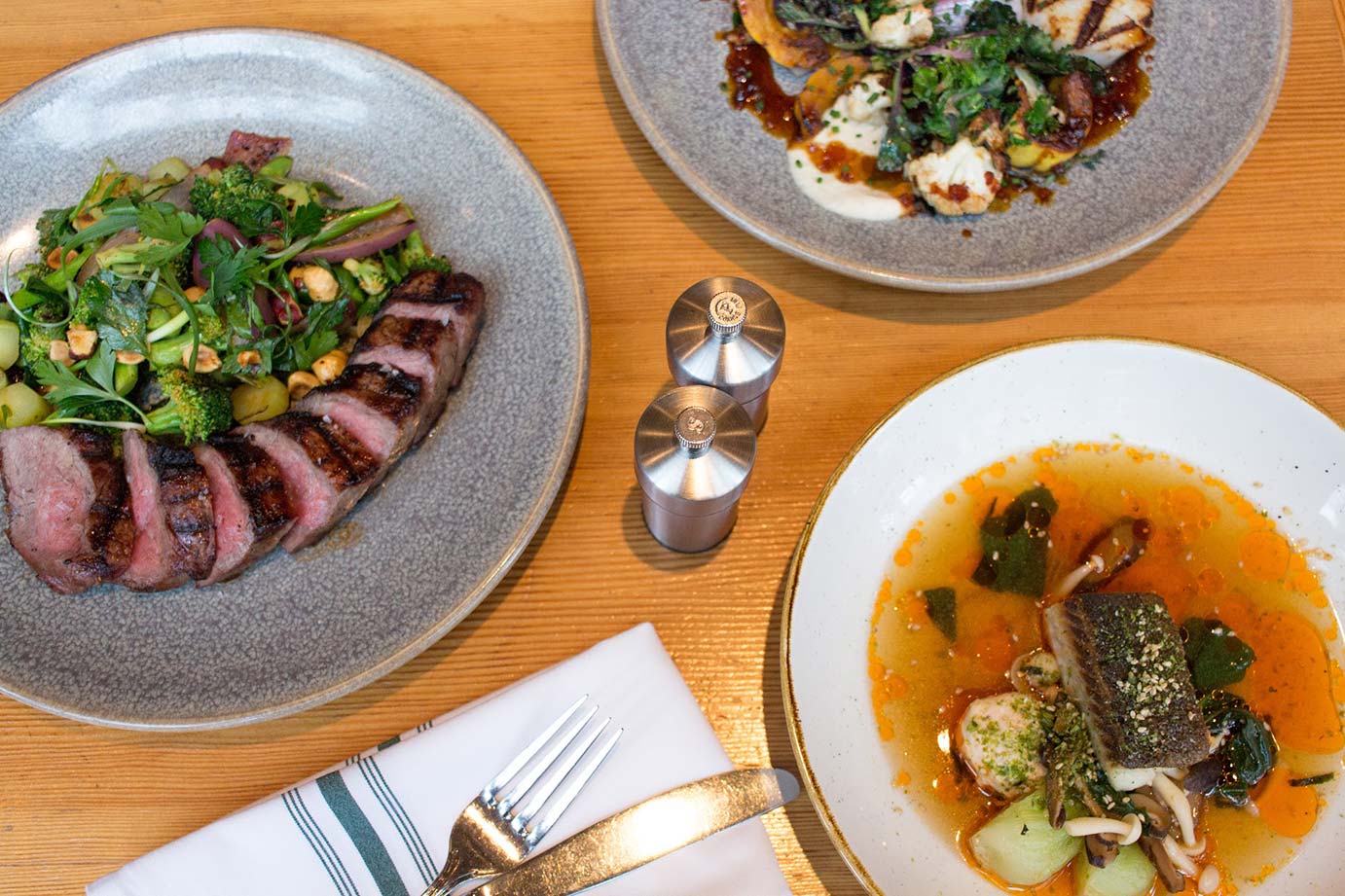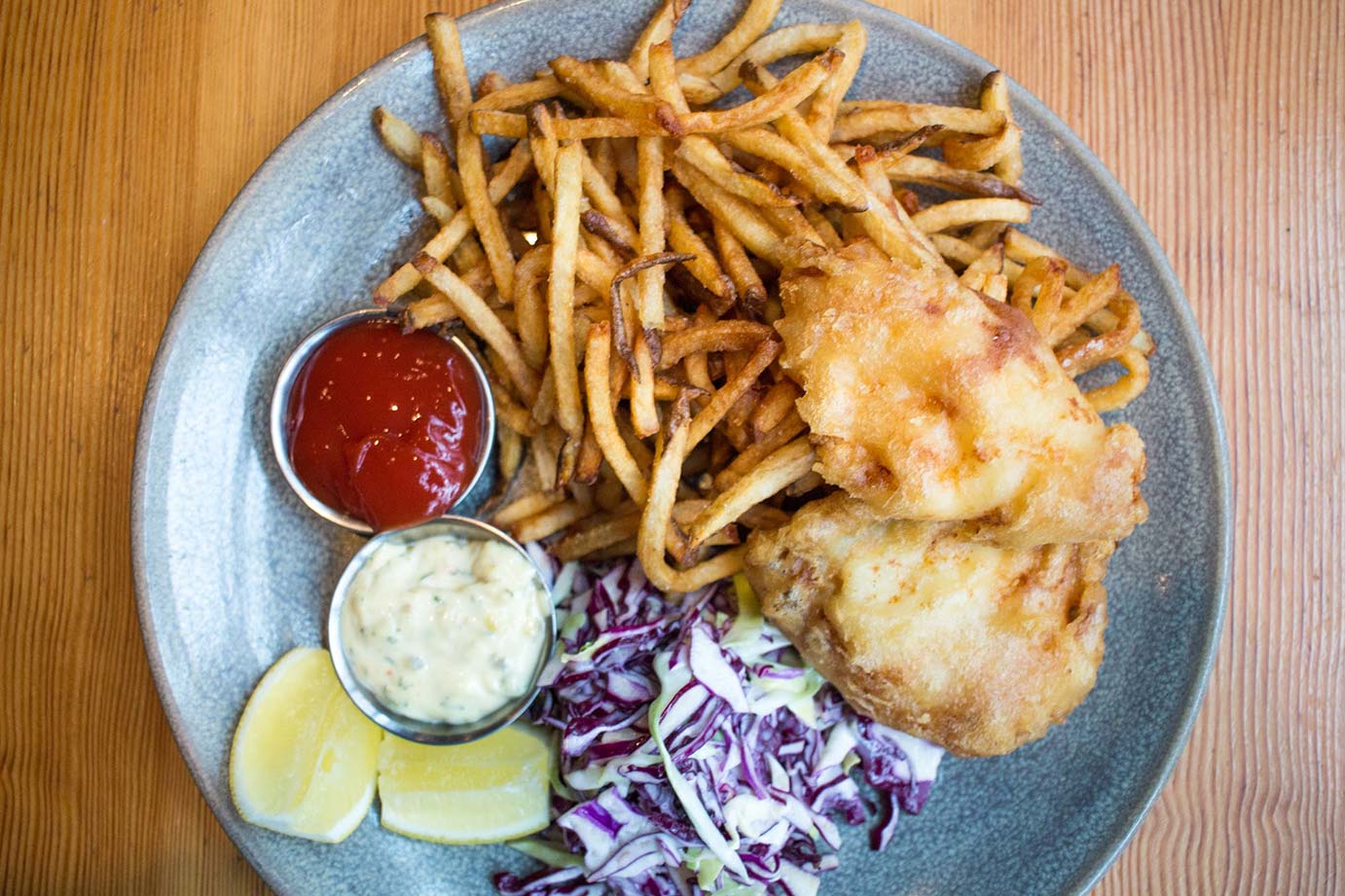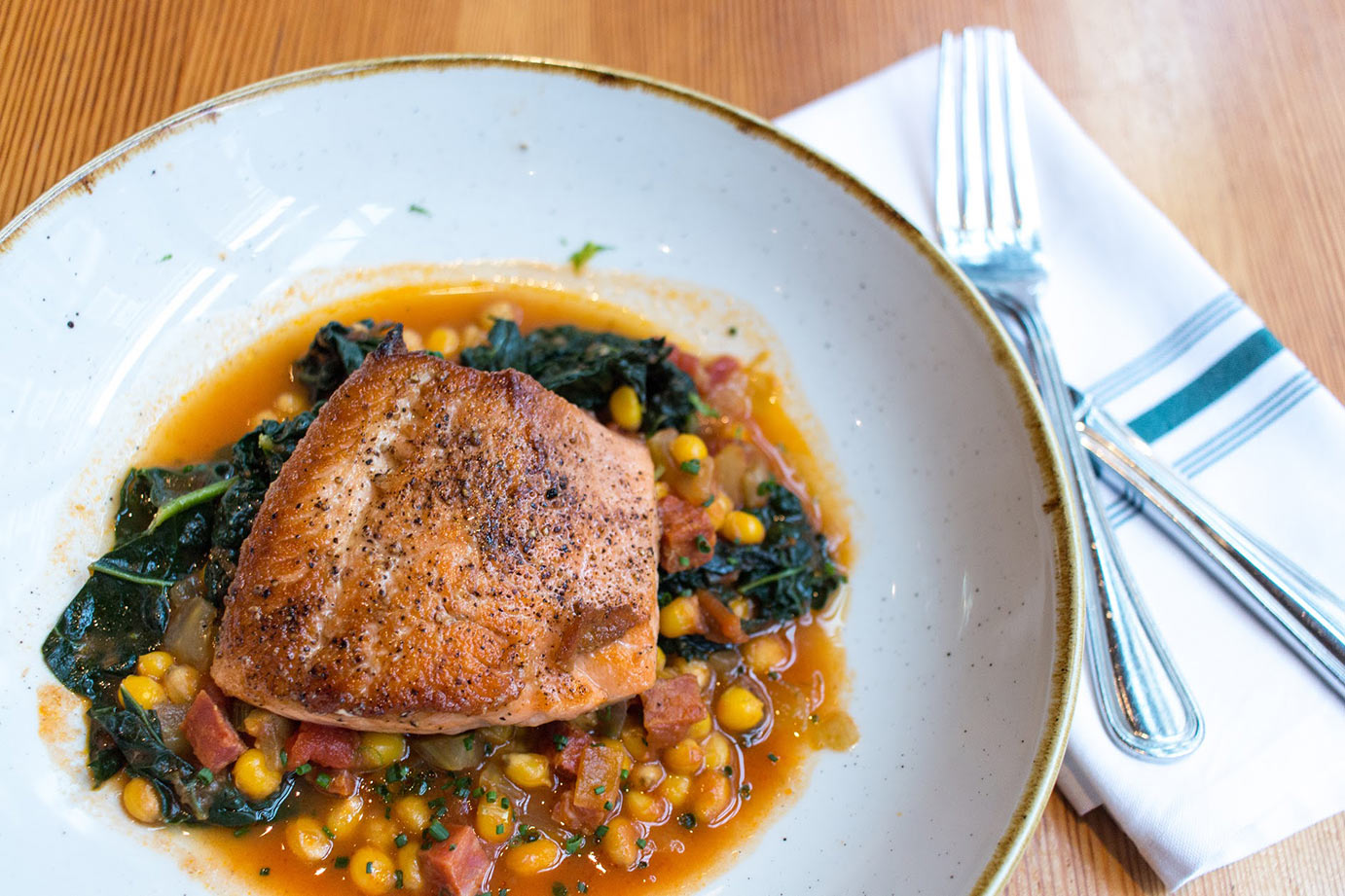ABOUT SOUTHPARK SEAFOOD
It’s been 25 years, and we’re still serving up some of the best seafood in the city. Located right in the heart of downtown Portland, we let the best of the Pacific Northwest shine - think Pacific Oysters, King Salmon, and Dungeness Crab, plus house made desserts, Oregon brews, and inspired cocktails. We keep it simple, seasonal, and always delicious. Whether you’re craving Clam Chowder, Fish + Chips, or Spicy Shrimp + Grits, Southpark Seafood is the spot for you. Just good food made from scratch. We’re also serious about sustainability. As a partner of the Monterey Bay Aquarium Seafood Watch, we only serve seafood that’s fished or farmed the right way. So grab a seat, order a drink, and dig in.

GET TO KNOW OUR EXECUTIVE CHEF, MICHAEL MOLITOR
Get ready for a culinary journey that blends local ingredients with global inspiration, promising a dining experience that's both sophisticated and soul-satisfying. A Pacific Northwest native and a Portland resident since 2002, Chef Michael Molitor is a seasoned figure in the local culinary scene.
With a track record that includes executive roles at esteemed spots like the Whiskey Barrel Lounge, Ex Novo Brewing and Ecliptic Brewing, Chef Molitor is no stranger to turning a meal into a memorable experience. Beyond the kitchen, Chef Molitor enjoys tending to his garden, playing with his dog, working on his backswing, and spending time with his family.
The Oyster Bar
13 seats. Always fresh. Never boring.
Welcome to our raw bar-Southpark’s cozy little corner dedicated to all things oysters. With a rotating seasonal menu and one seriously good selection, it’s the perfect place to post up for a dozen (or two) on the half shell.
New to oysters? No worries. Here's a quick crash course:
Brininess – That salty, ocean-kissed flavor. Some hit hard with sea salt, others are a little more mellow.
Texture – From silky and tender to meaty and firm, it’s all about how it feels when you slurp.
Finish – The lingering flavor that unfolds after you swallow—think mineral, melon, umami, even a hint of sweetness.
Oysters get their unique flavor from their environment—tides, salinity, even how they’re farmed. It’s like wine, but from the sea. Pull up a seat, ask questions, try something new. Our team’s got pairing suggestions and oyster wisdom to share. Come taste the story behind the shell.
Sustainability
Sustainable seafood in portland, or
Because doing the right thing should taste amazing, too.
Our roots run deep here in Portland. We’ve been part of this city for generations, and we’ve always believed that how we treat our guests should mirror how we treat the planet—with care, respect, and responsibility.
We’re serious about seafood, but even more serious about making sure the oceans we love are still thriving for generations to come. That means sourcing responsibly, partnering with farmers and fisheries that share our values, and thinking through every little detail of how we operate—front to back.
We’ve built sustainability into the bones of our business. Here's a peek at what that looks like on the daily:
- As a partner of the Monterey Bay Aquarium Seafood Watch, we only serve seafood that’s fished or farmed the right way.
- We compost all food waste (yes, all of it)
- Cooking oil? Recycled.
- Packaging? We avoid anything unnecessary.
- Cardboard, cans, glass, paper? All recycled.
- To-go containers? Compostable, of course.
- Even our trash can liners are compostable.
- Our straws are made from corn, and bar picks from wood.
- Menus, comment cards, letterhead? All made from post-consumer recycled material.


